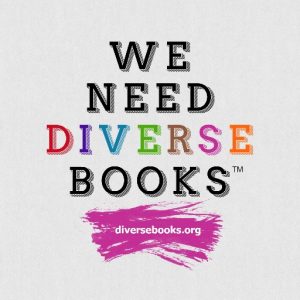In 2014, Librarian Emily Knox set out to understand why people challenge, and attempt to ban, books, as part of her research for the book that would become Book Banning in 21st-century America. She sat down with people who challenged books, and got them to discuss what drove them to make a case for banning a book in a public library. Some of her finding, broadly speaking, were not that surprising. As she noted in an interview with a blog called The Censorship Files:
Censorship tends to track with whatever is causing concern in a particular society. For example, in 21st -century America, books on diversity are often targeted for challenges….Censoring allows people to both work out these anxieties and also work to protect the morals and values that they believe are important in their own communities.
But what does the fact that “books on diversity are often targeted for challenge” mean? According to an article published by Knox in School Library Journal:
One of my research questions focuses on the stated reasons for challenging diverse books and the relationship of these reasons to the diversity of the characters. I decided to start with the ALA’s annual top 10 challenged book lists from 2001–2015. Twenty-nine diverse books appear a total of sixty-three times on these lists.
I found that many of the reasons given for the challenges centered on topics that were essential to the diverse characters in the titles…I also found the three most frequently stated reasons for challenging diverse books: for containing offensive language (36 instances), being sexually explicit (35 instances), and being unsuited for age group (36 instances). As I wrote in my own book …these familiar reasons seem to be related to the nature of truth and realism in fiction and to what extent fiction, especially fiction for youth, should mirror the human experience. These challenges ask us to consider the place of naturalistic fiction in the juvenile and teen sections of the public library or in the school curriculum.
Our country and our world is a big place, with lots of different people, an infinite range of beliefs, an incredible number of languages, and an enormous range of traditions, family structures, clothing choices, practices, and behaviors. And thanks to the internet, to a wide range of media sources, and enhanced mobility for many, we are brought into contact more and more often with people who don’t look familiar, or don’t sound familiar, or who may act in a way that is unfamiliar or initially strange. And our lizard brain, the part that has been part of our make-up throughout our evolution as a species, has us on the look-out for differences, in order to help us make sense of the world. So difference can sometimes feel uncomfortable. And often times, as Emily Knox explains, these are the reasons that books are challenged–the differences in them, the acknowledgement that other people’s lives are different from your own, makes people uncomfortable.
But this is where communication is so incredibly vital. We cannot make difference go away, no matter how much we might try. We cannot wish away the things that make us uncomfortable, or feel strange and different. The only cure? Listening and learning. Reading is a form of listening, of taking in someone else’s words and world views, and feelings, and perhaps empathizing with what they have to say. Reading helps us to acknowledge other people’s humanity in a unique, complex, and wonderful way. It also helps us to expand our understanding, so that the things that once seemed strange and different are now…not quite so strange anymore. Our lizard brain may react in funny ways, but it can evolve, just like the rest of us.
Another very important issue in terms of book banning is that many challenges involve children’s or young adult books, largely because parents are uncomfortable exposing their children to aspects of the world that may harm their ‘innocence’, or somehow incite unwanted behaviors. Again, these emotions stem from inherent, protective instincts that are part of our makeup. But there is almost no way to prevent people–young or old–from accessing the world and all the beauty and ugliness it contains. Instead, we also recommend communication. Talk with younger people (and older people. And people your own age) about the books they are reading, about what they liked about them, about how those books made them feel. Let them ask you questions about what words mean, about an odd grammatical choice in the text, about a character’s motivations or decisions. Read books with other people. I promise you, you’ll be surprised and impressed by the results.

We need diverse books because everyone deserves to recognize themselves, or a part of themselves in a story. But we also need diverse books because it helps us grow to read about someone who is nothing like us. We become better humans by understanding the stories that make up the people in this world of ours, not by shutting them out. And we need to prepare our young people to inherit this world by helping them realize its diversity and its wonder, and to find themselves in their own place in it. And that is why we celebrate diverse books, and also seek to reclaim those books that people want us not to read. Because the answer is never silence.

